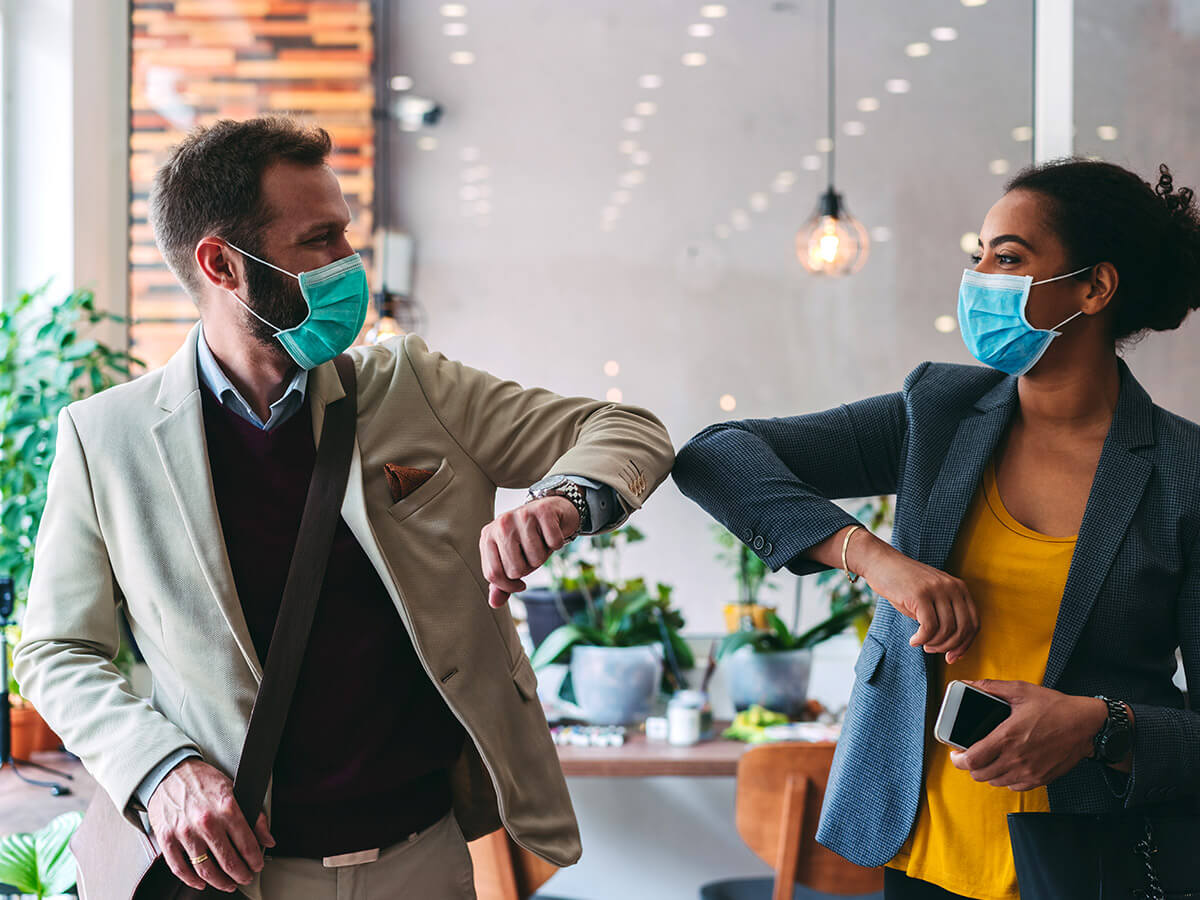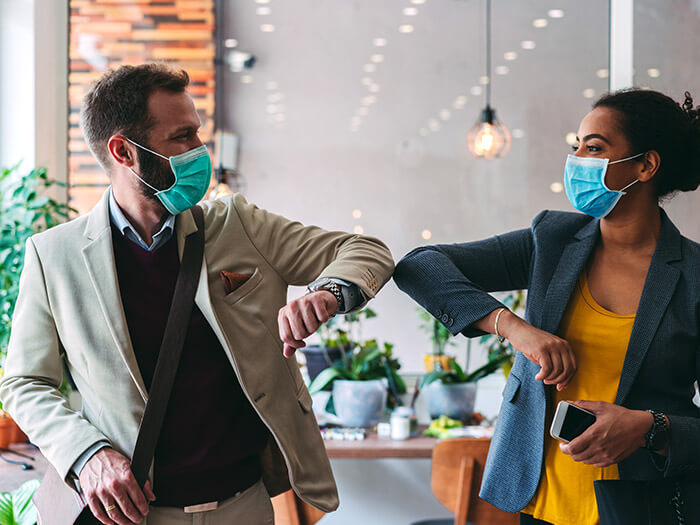
Office bound? Heed these 4 etiquette tips for the new normal
 Respect for personal space and comfort levels will be part of the new office etiquette as people return to their workplaces (Getty Images/martin-dm)
Respect for personal space and comfort levels will be part of the new office etiquette as people return to their workplaces (Getty Images/martin-dm)
As more and more people prepare for a to return to the office, questions remain about what that experience will look like and how we can mentally prepare for it. One big issue being addressed is how we should behave once we’re back. The rules around office protocols and etiquette have evolved considerably in the last few months as vaccination rates increase and social restrictions decrease.
“Over the past two years there has been quite an evolution in manners,” says Julie Blais Comeau, an Ottawa-based etiquette expert. “It’s like we’re relearning how to interact with each other.”
Here are some of the changes we can expect to see when office activities resume.
1. FOLLOW THE RULES
The new etiquette starts with ensuring you follow the employer’s safety guidelines. “All these protocols will be very much at the forefront,” says Blais Comeau.
“The responsibility needs to be on the employees to abide by the rules,” says CPA Shali Virdi, senior manager, consulting and deals, at PwC in Toronto. Virdi shares that their employees are expected to complete a standard health screening form and sign a social contract agreeing to abide by the defined guidelines to maintain the health and safety of staff, clients and the overall PwC community.
“We think of our partners and staff as professionals who will follow the requirements and attest to doing so on a daily basis,” Virdi says.
While it’s helpful to be vigilant in ensuring others obey the rules, that doesn’t mean employees should be reporting on every infraction they see, Blais Comeau cautions.
“They may see someone forgetting to wear a mask on the way to the washroom or sanitizing their hands,” she says. “Before reporting them to HR or the company hotline, it might be better to remind them of the guidelines if you are on friendly terms with them.”
2. READ THE SIGNS
Spontaneous face-to-face conversations, deskside chats or hallway encounters that were once common practice may be beyond what some employees can handle. “It’s about redefining the bubble and respecting other people’s space,” says Blais Comeau.
Observing body language when approaching someone is critical, she advises. “Some people will be very comfortable dining on a patio or shaking hands. Others won’t,” she says. “If you approach someone and their eyes get bigger or they pull back their hand, step back to a comfortable distance and say ‘hello, it’s nice to see you again’. If you’re uncomfortable being touched or near others, smile and simply say ‘I’m happy to see you but it’s best if we don’t shake hands.’”
Some companies have come up with creative means to signal people’s preferences on the job to save potential conflicts. UK-based recruitment specialist James Osborne shared this tweet of a company’s colour-coded wristband system. It’s a friendly and easy way to communicate different comfort levels to avoid awkward encounters.
3. AVOID CERTAIN TOPICS
Touchy topics such as everyone’s vaccination status, unproven theories or politics should be avoided. It may be tempting to ask colleagues whether they are vaccinated or not. But an important question to ask yourself first is whether it’s out of curiosity or caution.
“If you’re curious just don’t do it,” says Blais Comeau. “If it’s genuine concern about your own safety or health, then decide on how to approach them. But you have to respect whatever the answer may be.”
4. BE EMPATHETIC
People will be anxious the first few days and weeks after returning to work, Blais Comeau notes. “A lot will be worried about contact with others and being away from their children,” she says. “Keep in mind that we’re not out of the mental health cloud that COVID has created. It will require a lot of empathy and patience.”
On the positive side, people are now less afraid to show vulnerability, she adds. “They can allow themselves to say: ‘this is hard for me today’. Remember, empathy starts from the top down. I hope leaders are doing their part to talk about mental health, respecting boundaries and being attuned to others.”
PREPARING TO RETURN TO THE WORKPLACE
Read about the ways that organizations can get ready for reopening, what the working environment might be like and the best ways to mentally prepare yourself for being back at your desk.